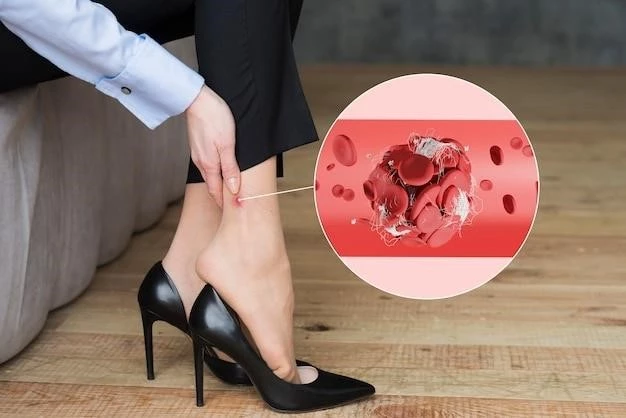Ledderhose Disease
When addressing Ledderhose Disease, it is crucial to explore various aspects. From symptoms and risk factors to understanding the condition and its genetic components, diving into progression and treatment options, followed by pain management strategies and therapy, will provide a comprehensive guide. Stay informed!
Overview of Ledderhose Disease
Ledderhose Disease, also known as plantar fibromatosis, is a rare condition where nodules form in the connective tissue of the feet. These nodules are made up of collagen, causing the tissue to thicken and form lumps on the bottom of the foot.
The symptoms of Ledderhose Disease may include painful lumps or nodules in the arch of the foot, which can make walking uncomfortable. The exact cause of this condition is still unknown, but it is believed to be related to a collagen disorder.
Several risk factors may contribute to the development of Ledderhose Disease, including a family history of the condition, genetics, and certain gene mutations. The disease tends to progress slowly over time, with the nodules potentially increasing in size and number.
It is crucial to seek professional medical advice if you suspect you have Ledderhose Disease. Various treatment options are available, including radiation therapy and corticosteroid injections to help manage the symptoms and potentially slow down the progression of the condition.
Understanding the nature of Ledderhose Disease is essential for timely intervention and appropriate management. By staying informed and seeking medical attention, individuals can effectively address this challenging condition and improve their quality of life.
Symptoms and Risk Factors
The main symptoms of Ledderhose Disease are the development of nodules or lumps in the connective tissue of the feet. These nodules are often painful and can cause discomfort while walking or standing. As the condition progresses, the lumps may increase in size and number, further impacting mobility.
Several risk factors are associated with Ledderhose Disease. A family history of the condition plays a significant role, indicating a possible genetic predisposition. Additionally, certain gene mutations linked to collagen production may increase the likelihood of developing this condition. Understanding these risk factors can help individuals assess their susceptibility to Ledderhose Disease.
If you experience persistent foot pain, notice lumps or nodules forming on the soles of your feet, or have a family history of the condition, consult a healthcare professional for an accurate diagnosis and personalized treatment plan. Early detection and intervention are key to managing Ledderhose Disease effectively and mitigating its impact on daily activities.
Understanding the Condition
Ledderhose Disease, characterized by the formation of nodules in the connective tissue of the feet, is a condition that can significantly affect mobility and quality of life. The nodules, composed of collagen, lead to the thickening of the tissue on the underside of the foot, resulting in painful lumps that can make walking uncomfortable.
While the exact cause of Ledderhose Disease remains uncertain, factors such as genetics, family history, and collagen-related gene mutations are believed to contribute to its development. The progression of the condition involves the gradual enlargement of the nodules, potentially affecting multiple areas of the foot.
By gaining a deeper understanding of Ledderhose Disease, individuals can better recognize the symptoms, risk factors, and potential complications associated with this condition. This knowledge empowers patients to proactively seek medical advice, explore treatment options, and engage in preventive measures to manage Ledderhose Disease effectively.
Consulting a healthcare provider for a comprehensive evaluation and discussing the available treatment modalities can aid in developing a personalized care plan tailored to address the specific needs of individuals affected by Ledderhose Disease. Education and awareness play a crucial role in managing this condition and promoting overall well-being.
Genetics and Gene Mutation
Genetics and gene mutations play a crucial role in the development of Ledderhose Disease. Individuals with a family history of the condition have an increased risk of inheriting genetic factors that predispose them to this connective tissue disorder. Specific gene mutations associated with collagen production can also contribute to the pathogenesis of Ledderhose Disease.
Understanding the genetic component of this condition is essential for individuals and healthcare providers in evaluating the risk factors and potential progression of Ledderhose Disease. Genetic testing may be recommended in cases where there is a strong family history of the disease or when a hereditary component is suspected.
By identifying the genetic markers linked to Ledderhose Disease, medical professionals can offer personalized treatment strategies based on individual genetic profiles. Genetic counseling may also be beneficial for patients and their families in understanding the hereditary nature of the condition and making informed decisions regarding treatment and management.
Individuals who suspect they may be at risk due to genetic factors or family history should seek genetic counseling and incorporate genetic testing into their medical evaluation. By elucidating the genetic underpinnings of Ledderhose Disease, healthcare professionals can provide more precise diagnoses and targeted therapies to improve patient outcomes and quality of life.
Progression and Treatment Options
Ledderhose Disease tends to progress slowly over time, with the nodules in the connective tissue of the feet potentially increasing in size and number. Monitoring the progression of the condition is crucial for timely intervention and effective management.
Various treatment options are available to address Ledderhose Disease. These may include radiation therapy, which aims to reduce the size of the nodules and alleviate pain. Corticosteroid injections can also help manage symptoms by targeting inflammation and reducing discomfort associated with the lumps on the feet.
Combining different treatment modalities tailored to the individual’s needs and the stage of Ledderhose Disease can enhance the overall outcome. Physical therapy and orthotic devices may be recommended to support foot function and mobility while minimizing the impact of the nodules on daily activities.
Moreover, surgical intervention may be considered in cases where conservative treatments have not provided adequate relief or when the nodules significantly impair foot function. Surgical procedures aim to remove the affected tissue and improve mobility, although the decision for surgery should be made in consultation with a specialist.
Understanding the progression of Ledderhose Disease and exploring the diverse treatment options available can empower individuals to make informed decisions about their care. Seeking guidance from healthcare professionals and following a comprehensive treatment plan tailored to their unique needs can help manage this condition effectively and enhance overall quality of life.
Pain Management and Therapy
Effective pain management is essential for individuals living with Ledderhose Disease to improve their quality of life and overall well-being. Addressing the discomfort associated with the nodules in the feet requires a comprehensive approach that combines various therapeutic strategies.
Therapy options for pain management in Ledderhose Disease may include physical therapy to improve foot function and reduce discomfort while walking. Custom orthotic devices can provide additional support, alleviating pressure on the affected areas and enhancing mobility.
In addition to physical interventions, pain relief can be achieved through medication such as nonsteroidal anti-inflammatory drugs (NSAIDs) to help manage inflammation and reduce pain levels. Topical treatments like pain-relieving creams or ointments may also provide temporary relief from discomfort.
Furthermore, alternative therapies such as acupuncture or massage therapy can complement conventional treatments and offer additional pain relief benefits. Lifestyle modifications like wearing cushioned footwear and avoiding activities that exacerbate foot pain are also important considerations in pain management for individuals with Ledderhose Disease.
Consulting with healthcare professionals specializing in pain management and physical therapy can guide individuals in developing a personalized pain management plan tailored to their specific needs. By embracing a multifaceted approach to pain relief and integrating various therapeutic modalities, individuals can effectively manage the symptoms of Ledderhose Disease and enhance their overall comfort and mobility.
Conclusion and Recommendations
In conclusion, Ledderhose Disease is a challenging condition characterized by the development of painful nodules in the connective tissue of the feet; Understanding the symptoms, risk factors, genetic components, progression, and treatment options is essential for managing this condition effectively.

For individuals living with Ledderhose Disease, seeking prompt medical attention and exploring diverse treatment modalities tailored to their needs are paramount. Regular monitoring of the condition’s progression and engaging in pain management strategies can significantly improve quality of life.
Recommendations for individuals with Ledderhose Disease include maintaining open communication with healthcare providers, adhering to prescribed treatment plans, and incorporating lifestyle modifications to support foot health. Educating oneself about the condition and staying proactive in managing symptoms are key aspects of living well with this condition.
By adopting a holistic approach to care, including medical interventions, pain management techniques, and lifestyle adjustments, individuals can effectively navigate the challenges posed by Ledderhose Disease. Remember, you are not alone in this journey, and healthcare professionals are here to support you every step of the way.
